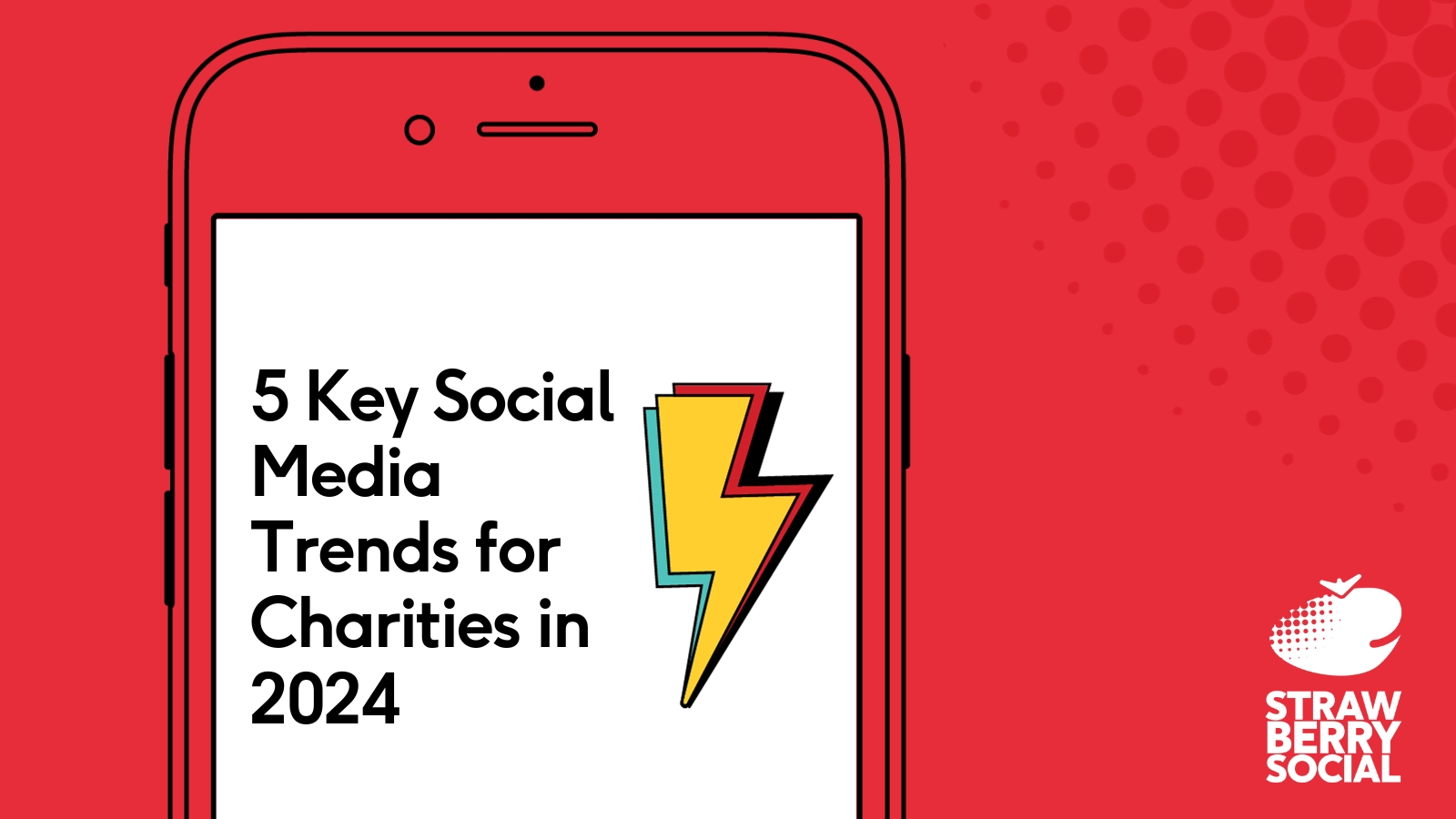2024 promises to be another whirlwind year for charities on social media. With so many new tools, exciting tech and platform developments on the horizon, where should you focus your attention?
We’ve done the research on what social media platforms and charities are planning to help you narrow it down. Here are the top 5 social media trends we predict will help your charity connect, inspire action and amplify its impact in 2024.
It’s clear that 2024 will be another year where communities pull together to tackle shared challenges and to support each other.
David Knott, National Lottery Fund.
- Building community and deeper connections
2024 will be another difficult year for charities, as people continue to struggle with the effects of the cost of living crisis. Charities should spend this year focusing on strengthening relationships in the communities you have right now. Take the time and opportunity to focus your strategy on turning your current follower user base into long-term, loyal supporters. Focus content on shared values to connect with your audience on social media. Shine a spotlight on your audience: celebrate your supporters and prioritise authentic, human engagement with followers. People remember how they’re treated and when the economy picks up again, and they won’t forget. - Gaming for Giving
Charities will continue to experiment with gaming and get younger generations involved in fundraising. Gaming for Giving demonstrates a willingness to understand what younger generations are looking for in online authenticity through community building and fun, with a live element ready to help offer real time support if needed. Charities will continue to reap the brand building and fundraising benefits that come from connecting with gamers doing what they love.
Top tip: Don’t underestimate the importance of building Trust and Safety into Gaming for Giving campaigns. Find out more about Gaming Safety and Moderation.Our team has had the privilege to participate with charities and brands using online games to promote their mission(s) in a creative, safe manner.
NSPCC’s Game Safe Festival taking place this January and February, combines digital literacy education, with virtual gaming and competition. The fundraising element, called “Press Play”, invites influencers and gamers alike to join the fun, live stream and raise funds for NSPCC.
If you need support setting up a similar event, get in touch with us here.
- AI is here to stay but true connection needs a human touch
Everyone’s new favourite topic is Artificial Intelligence. Using AI to predict what time of year a donor is most likely to give as well as how much they are likely to give has begun to pick up steam and is something to consider as part of your fundraising strategy. Basic customer service messaging, building and growing word filters are other good examples of how charities can use AI to help service online communities and keep them safe. However, many experts are finding issues with AI in practice, especially when it comes to emotional connection.Complaints about ‘robotic’ responses and inauthentic engagement are increasingly being reported across multiple industries. Our research confirms that charity supporters value human interaction over robotic standard responses. Your community members want to speak to a human being, not a bot. Relying on AI to support vulnerable audiences can cause real harm too. Therefore, we strongly caution against replacing your Human Moderation and Community Management people with AI. - X – how to use it to your advantage as it’s changing, and dying
The platform formerly known as Twitter continues to spiral out of control, in terms of safeguarding and misinformation. While personal users are likely to migrate to Threads, there is still no obvious alternative for news outlets, media commentators and government representatives. For charities, it’s worth sticking around on the platform while this is the case. However, using X as a primary space for marketing and advertising will reduce, giving charities the opportunity to put their social media resources to work on other platforms that can deliver a stronger sense of community and safety. Later this year, we will share best practices for exiting X altogether. - Instagram will continue to be a force for charities, but TikTok will also gather pace
People give with their hearts, and both Instagram and Tiktok are spaces built around visual authenticity and vulnerability. We polled our clients in November 2023, and the results were incredible. People want emotional connection, improvisation, and humanity from the organisations they follow. This is especially true when it comes to giving.Prioritise original, native content for both Instagram and Tiktok, rather than repurposing polished or branded national campaign content. Live stream fundraising events, share real life stories and glimpses of your team in action behind the scenes.
Consider using Instagram Collabs in feed posts or Reels to reach new eyes and boost engagement. You can have up to 20 collaborators on a single post. You could team up with a value-aligned brand or join forces with other charities for a key event or campaign.
It’s clear that 2024 is going to be the year of community building and authentic audience relationships for charities and brands on social media. Sharing authentic, value-based content and keeping it real will boost engagement and deepen those all-important connections with your teams and supporters. Here’s to a year of more meaningful engagement for your charity on social media.
Need expert support from community managers who understand charity audiences? We’ve got you covered. Get in touch with us.



 January 11, 2024
January 11, 2024  Share This Post
Share This Post